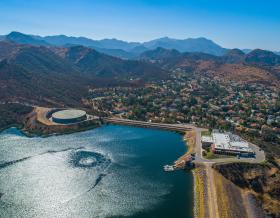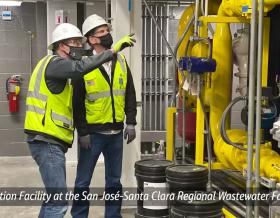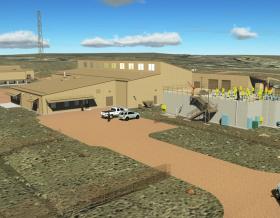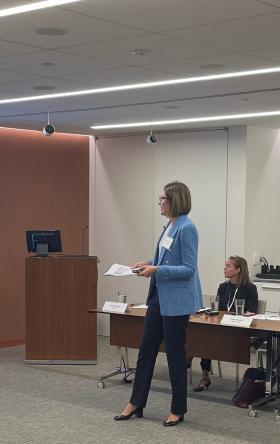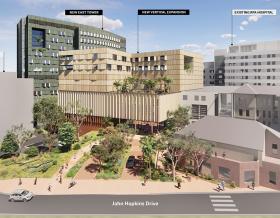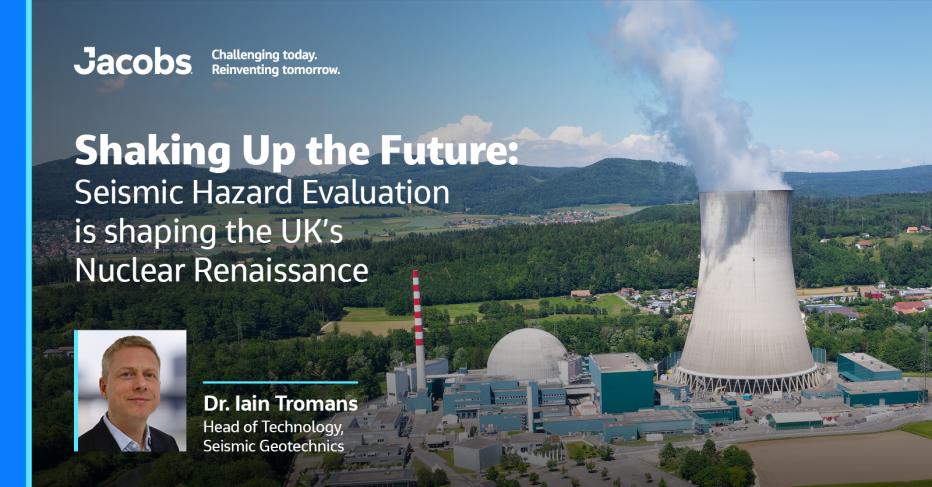
On March 11, 2011, a 9.0-magnitude earthquake struck Honshu Island, Japan, the largest ever recorded in the country’s history. The event disabled power and cooling systems at the Fukushima Daiichi nuclear plant, leading to core meltdowns in three reactors. The accident led to the evacuation of more than 100,000 people and the release of a large amount of radioactive material.
The disaster triggered a global reexamination of nuclear safety and catalyzed the growth of Probabilistic Seismic Hazard Analysis (PSHA) within the broader framework of Probabilistic Safety Assessment (PSA). These methods quantify seismic hazards and risks for new nuclear projects and life-extension efforts.
Fast forward to today: Jacobs’ seismic hazard team has been a key player in the U.K.’s nuclear renaissance, starting with feasibility studies for Hinkley Point C, which culminated in the first major PSHA for a new-build power station site in a generation.
To date, our team has completed detailed PSHA studies at five (Hinkley Point C, Sizewell C, Bradwell B, Heysham and Hartlepool) of the original eight government-earmarked sites for new gigawatt-scale power stations. At Hinkley Point C and more recently, Sizewell C, the Jacobs-led studies were a vital part of the documentation underpinning Électricité de France’s (EDF) site license applications, which the Office for Nuclear Regulation (ONR) granted following detailed scrutiny.
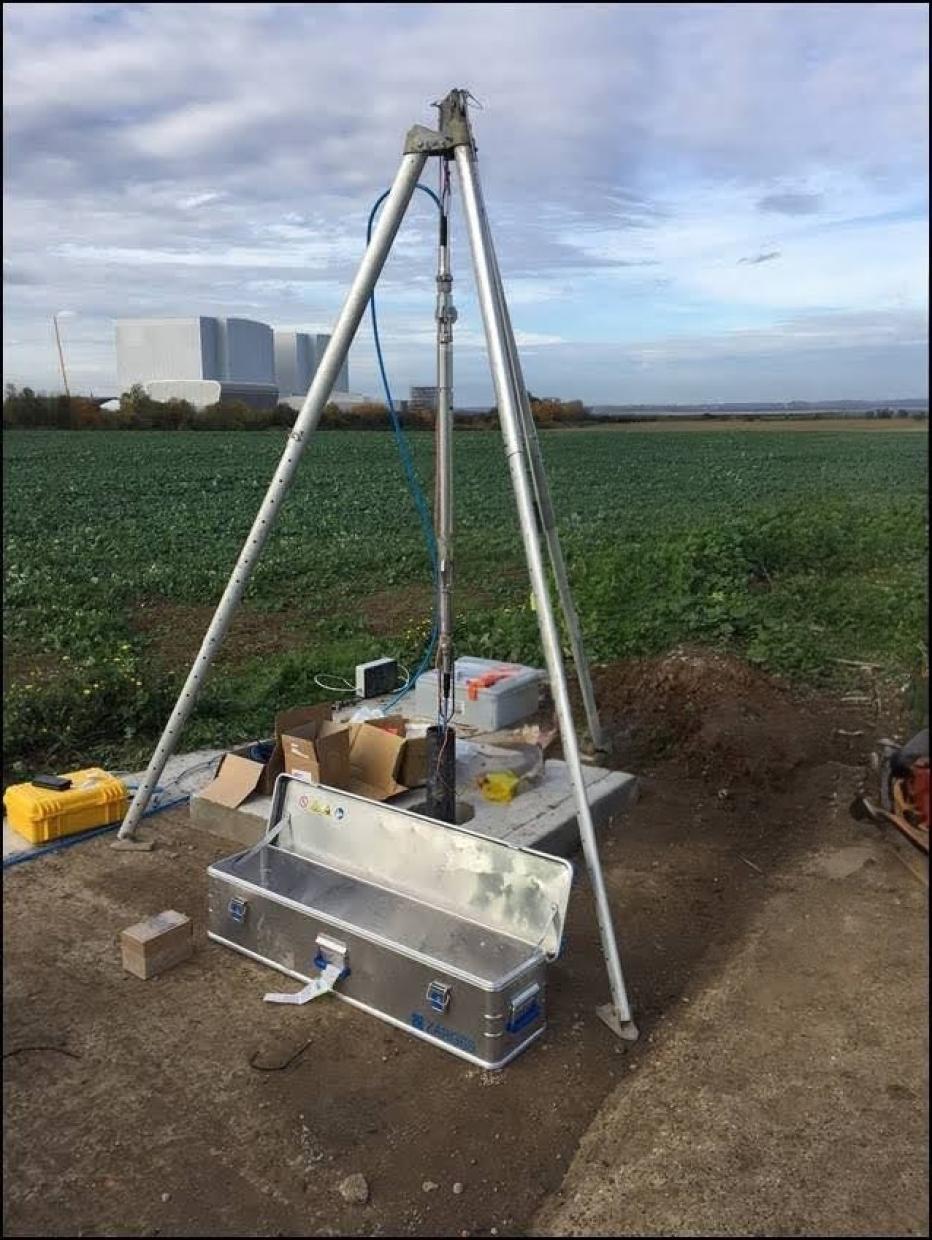
Jacobs’ PSHA study at Bradwell B included the installation of the U.K.’s first multi-instrument borehole seismometer array, which provided invaluable site-specific earthquake records from small magnitude events and helped constrain modelling uncertainties
This experience will be needed for the proposed expansion of nuclear power in the U.K. The Government nuclear roadmap aims to increase nuclear generation by up to four times to 24 GW by 2050. According to media reports, £14.2bn of investment has been committed for the new Sizewell C reactor in Suffolk, as well as plans for several small modular reactors, which require a much smaller footprint and upfront investment than traditional nuclear power plants across the U.K. They have the potential to be built faster with lower radiological risk, more affordably than their bigger nuclear siblings and deployed more widely as they have lower cooling requirements (which can open inland opportunities).
Navigating a safer roadmap for nuclear growth
If these plans advance, it will be the greatest nuclear growth in several generations. Critically, the Government will now allow nuclear projects to be built outside the original eight designated nuclear sites. While this scope opens opportunities for development in new areas across the U.K., it highlights the need for effective site evaluation studies to ensure that we safely locate, design and operate nuclear infrastructure, whether it’s traditional large-scale power plants, SMRs or AMRs.
Relying on local knowledge and best practice
Jacobs covers all skills required to undertake seismic hazard studies, including engineering seismology, structural geology, geotechnical engineering and engineering geology.
PSHA is a complex task, and in the U.K., there is a high level of uncertainty associated with the data and models used in the assessments, primarily due to the limited number of large, damaging earthquakes that have occurred in the last two hundred years.
Due to the non-prescriptive nature of the U.K. nuclear regulatory regime, there are also significant uncertainties associated with the requirements for conducting seismic hazard assessments for new nuclear power stations. The Office for Nuclear Regulation Technical Assessment Guides provides broad principles but not detailed guidance on PSHA studies.
At the time of the Hinkley Point C PSHA, Jacobs developed an innovative approach aimed at providing regulatory assurance whilst acknowledging the commercial and program constraints faced by U.K. utility operators.
We adapted international best practice, as embodied in the Senior Seismic Hazard Analysis Committee (SSHAC) guidelines, to create a streamlined PSHA approach for nuclear facilities. The result: we achieved regulatory approval for the Hinkley Point C project at a considerably lower cost than the SSHAC-type study which was being implemented for nuclear new-builds at that time.
Our team has a long track record of successfully applying this approach for both civil nuclear and nuclear defence sites, resulting in deep domain knowledge and unparalleled experience.
Driving innovation through academic relationships
We continually expand our technical offering by partnering with external subject matter experts and universities, and sponsoring research. One standout example is our work with the University of Strathclyde through a Royal Academy of Engineering Industrial Fellowship, to develop a new ‘backbone’ model for predicting earthquake ground motion, the first of its kind for the U.K.
The model allows for more transparent and consistent treatment of uncertainties compared to previous models as the predictions are constrained by a combination of seismological theory and empirical data from earthquakes in the U.K. and surrounding regions. The model is now ripe for use in any future PSHA study.
Creating a fit-for-purpose assessment for SMRs
The existing PSHA approach for large-scale nuclear power station sites will need to be adapted for SMRs, as the location needs and risk profiles differ. This is due to several factors, including SMRs offering a lower radioactive risk and the use of seismic isolators in their construction. Seismic isolators, also known as base isolators, are devices placed between the foundation and the structure of an SMR to reduce the transfer of seismic forces into the building.
Jacobs will leverage almost two decades of industry experience and the latest academic research to develop a graded PSHA approach focused on the specific needs of SMRs, aligning with guidance from the International Atomic Energy Agency (IAEA) and applying the ALARP (As Low as Reasonably Practicable) principle in risk management.
Building the future on a stronger, safer foundation
As the world transitions to a more sustainable energy future, nuclear power will play an increasingly central role. Identifying optimal sites and extending the life of existing infrastructure will depend on a robust yet streamlined PSHA approach.
Through the experience in specialist areas like PSHA, Jacobs is laying the groundwork for a safe, more resilient energy future and setting a global benchmark for nuclear safety, efficiency and innovation.
Meet the author
Dr. Iain Tromans

Iain's career in earthquake engineering began with a PhD at Imperial College, investigating factors influencing the distribution of damage to buried infrastructure, based on fieldwork following the devastating earthquakes in Turkey in 1999. Iain has spent the past 20+ years in engineering consultancy, being heavily involved in seismic hazard assessments for critical infrastructure, with a particular emphasis on nuclear facilities. As Head of Technology for Seismic Geotechnics at Jacobs, Dr Iain Tromans provides technical leadership in the development and application of novel solutions in geotechnical earthquake engineering and engineering seismology for clients spanning the energy, defense, transportation, maritime, water, and cities and places sectors.



